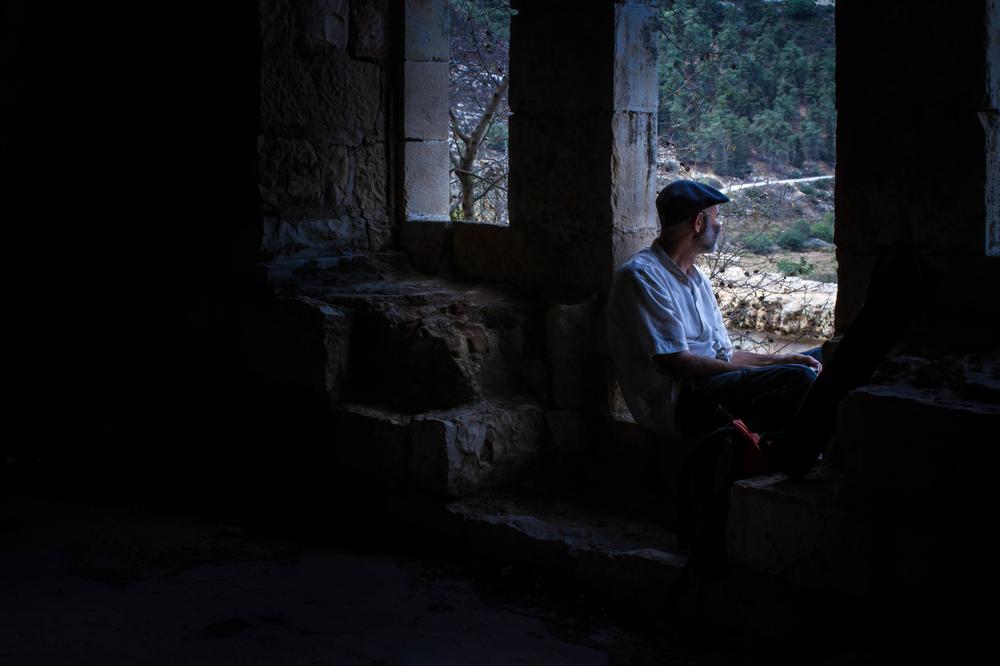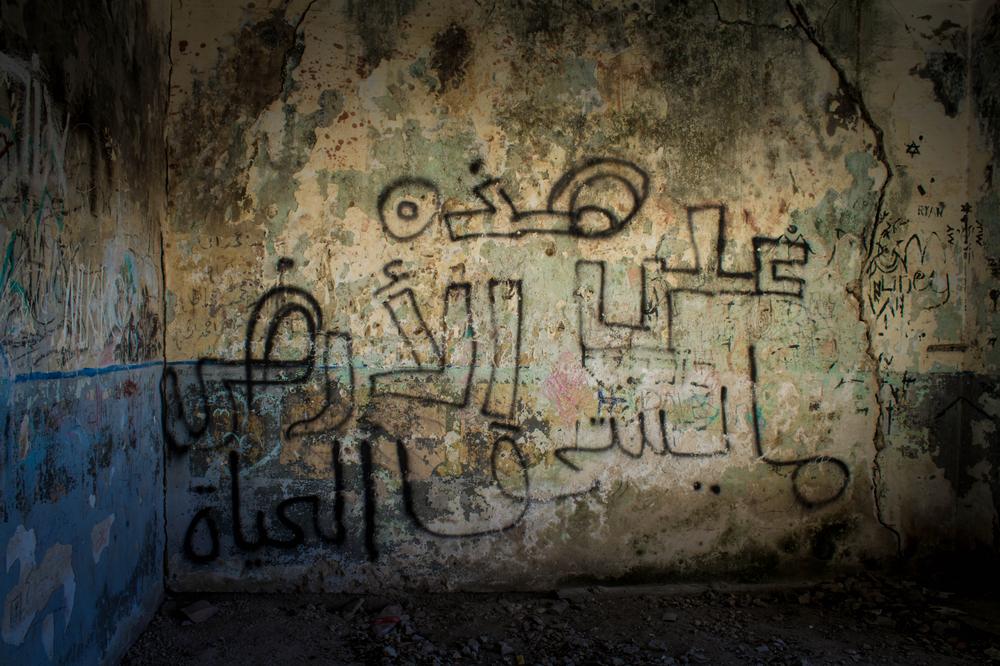Palestinians fear the old stone houses of Lifta, the last deserted pre-1948 Palestinian village, will soon be destroyed.
Vinciane Jacquet Last updated: 11 Nov 2014 09:15
| The last deserted pre-1948 Palestinian village in Israel is facing possible destruction. Located on the outskirts of Jerusalem, the village of Lifta is an empty collection of old stone houses that have fallen into neglect. For the past 20 years, the Israeli government has pushed to destroy the remaining buildings to make room for new luxury homes, hotels, a shopping mall and a recreation park. The courts have rejected governmental requests to build, but the construction of a new railway line through the village has many thinking the end is near. In the meantime, local Israeli Jews use Lifta as a picnic spot and swim in its ancient spring. For the few surviving Palestinians who were born in Lifta, visiting their former village brings a mix of emotions: nostalgia for an idyllic childhood spent amongst the olive groves, and bitterness at the destruction and appropriation of their homes and heritage. Lifta's inhabitants were systematically expelled by Israeli forces between 1947 and 1948. Afterwards, Jewish immigrants, mostly from Yemen, moved into the empty homes. Following the Six-Day War in 1967, the Israeli government offered the Jewish residents of Lifta new homes in Jerusalem; they happily accepted, and blew up the roofs of Lifta's houses before leaving to ensure no-one would return. The Palestinian villages inside present-day Israel, deserted in 1948, have largely disappeared from the map. While Israel still retains around one million Palestinian residents, many fear the destruction of Lifta would erase, once and for all, the memory of those Palestinians who lost their homes when the state of Israel was created. |
View As Slideshow >>

/Vinciane Jacquet/Al Jazeera
Before 1948, the village of Lifta had 500 houses with about 3,000 inhabitants. Half were in the upper part of the village, which has already been mostly demolished, and the other half in the lower part. A few old houses from the upper part of Lifta remain visible today.

/Vinciane Jacquet/Al Jazeera
Ilan Shtayer - a former Israeli soldier who is now a member of "Combatants for Peace", an Israeli-Palestinian organisation demanding an end to the occupation of Palestinian land - is part of an association called "Save Lifta", which is fighting for the preservation of the village.

/Vinciane Jacquet/Al Jazeera
In one of the remaining houses of Lifta, a young Israeli woman comes to have a picnic. On the wall, written in Arabic, is the slogan: "Lifta is ours, we will come back."

/Vinciane Jacquet/Al Jazeera
An Israeli family enjoys a picnic in Lifta. When asked, they said they did not know the story of the village.

/Vinciane JacquetVinciane Jacquet/Al Jazeera
Young Israelis bathe in the former spring of Lifta.

/Vinciane Jacquet/Al Jazeera
A verse from a poem by Palestinian poet Mahmoud Darwish on a wall inside one of the old homes in Lifta reads: "This land deserves life."

/Vinciane Jacquet/Al Jazeera
Since 1967, the Israeli army has been using Lifta for military exercises because the environment and rough, hilly terrain are similar to Lebanon.

/Vinciane Jacquet/Al Jazeera
Israel Jalal, who was born in Lifta, had to leave the village with his family when he was 12. He lived in the upper part of Lifta, and his childhood home was demolished a long time ago to make room for an administrative building. He used to take his boys to Lifta "to let them know it is their land".

/Vinciane Jacquet/Al Jazeera
Palestinian woman from Gaza who was two years old when her family fled the village, and was subsequently raised in the United States. She supports the right to return.

/Vinciane Jacquet/Al Jazeera
Yacoub Odeh lived with his family in Lifta. The roof of his home was blown off by the Israeli Army in 1969, but the remains of the house are still visible. He remembers a childhood of gardens, olive groves and racing other children to school.
http://www.aljazeera.com/ |

No hay comentarios:
Publicar un comentario